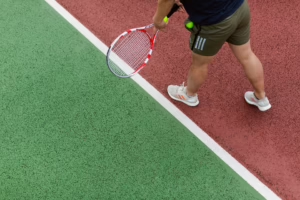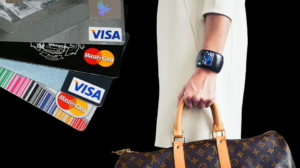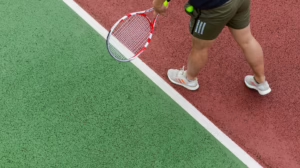The Role of VAR: Revolutionizing Fair Play in Soccer
Introduction
In recent years, Video Assistant Referee (VAR) technology has transformed the landscape of soccer, introducing a new layer of oversight to the game. Initially met with skepticism and controversy, VAR has emerged as a pivotal tool in promoting fair play, ensuring that officiating errors, which have historically plagued the sport, are minimized. This article explores the inception of VAR, its implementation, the controversies surrounding it, and its lasting impact on soccer.
The Inception of VAR
Background
The idea of using video technology in soccer isn’t entirely new. Discussions around video assistance date back decades, with various proposals made to enhance officiating accuracy. However, the formal introduction of VAR came after a series of high-profile incidents highlighted the limitations of human refereeing. The 2014 FIFA World Cup in Brazil was particularly significant, showcasing moments where incorrect decisions led to widespread criticism of match officials.
Initial Trials
The first formal trials of VAR began in the Netherlands in 2012, using live feeds and video replay to assist referees in critical situations. This pilot program aimed to assess the feasibility of integrating technology into real-time officiating. Successful trials followed in various leagues, ultimately leading to FIFA’s approval for its use in international competitions.
Official Launch
VAR was officially used at the 2018 FIFA World Cup in Russia. The tournament marked a significant milestone in the technology’s integration, as it demonstrated its potential to influence match outcomes positively. The initial implementation was met with mixed reviews, but it laid the groundwork for future refinements.
How VAR Works
Operational Mechanics
VAR operates through a team of video assistants who monitor the game from a centralized location. They communicate with the on-field referee through headsets, providing real-time analysis of pivotal moments. VAR is primarily used for four types of decisions:
- Goals: To check for potential fouls or offside positions in the buildup to a goal.
- Penalty Decisions: To review penalties awarded or not awarded.
- Direct Red Cards: To confirm or overturn red card decisions.
- Mistaken Identity: To rectify instances where the wrong player is cautioned or dismissed.
The Process
When an incident warrants review, the VAR team communicates with the on-field referee, who may decide to review the play on a sideline monitor. This process aims to ensure that the correct call is made based on clear and obvious evidence.
The Impact of VAR on Fair Play
Reducing Human Error
One of the most significant advantages of VAR is its ability to minimize officiating errors. Soccer has long suffered from controversial calls that can determine the outcome of matches, affecting team morale and fan engagement. By utilizing technology, referees can make more informed decisions, leading to greater accuracy and fairness.
Transparency and Accountability
VAR also promotes transparency in officiating. Spectators frequently express frustration over unclear decisions, which can alienate fans from the sport. With the introduction of video reviews, explanations are provided for decisions, and fans gain insight into the thought process behind calls made during the game. This shift enhances accountability, as referees can no longer hide behind the ambiguity of their decisions.
Game Integrity
By reducing errors, VAR plays a crucial role in maintaining the integrity of the game. An accurate officiating process ensures that teams are rewarded for their performance on the field rather than being adversely affected by human mistakes. This shift in dynamics fosters a greater sense of fairness and equality, as teams can compete under more just circumstances.
Controversies Surrounding VAR
Mixed Reception
Despite its advantages, VAR has faced considerable backlash from players, coaches, and fans. One of the primary criticisms is the disruption it causes to the flow of the game. Matches often see prolonged stoppages as referees review plays, leading to frustration among spectators wanting a seamless viewing experience.
Decision-Making Clarity
Another point of contention is the criteria for VAR intervention. The subjective nature of certain decisions, particularly regarding fouls and offside situations, has led to inconsistency in its application. Critics argue that the reliance on technology can sometimes overshadow the human element of refereeing, leading to debates on the validity of certain calls.
Emotional Impact
Furthermore, the emotional response to decisions still plays a significant role in soccer. Controversial calls can ignite passionate reactions from players and fans alike. Even with VAR, moments of tragedy or elation are hard to replicate. While technology can clarify the decision-making process, it does not eliminate the drama that characterizes live sports.
Case Studies: VAR in Action
FIFA World Cup 2018
The implementation of VAR at the 2018 FIFA World Cup provided several noteworthy cases that exemplified its impact. One of the most controversial moments occurred during the Round of 16 match between Croatia and Denmark. A handball decision against Denmark led to Croatia being awarded a penalty, ultimately impacting the match’s outcome. VAR’s intervention was met with mixed feelings, showcasing both its effectiveness and the contentious debates surrounding its application.
UEFA Champions League
In the UEFA Champions League, VAR has played a pivotal role in key matches. The 2019/20 season saw several important decisions influenced by VAR, including controversial penalty calls and offside rulings. While some celebrated the accuracy provided by the system, others criticized the delays and inconsistencies in its application.
Domestic Leagues
Leagues such as the English Premier League and Serie A have also utilized VAR extensively. In the 2019 Premier League season, notable incidents prompted protests from fans and managers alike. The decision-making process during the offside calls remained a contentious topic, with discussions about the need for clearer guidelines for what constitutes a "clear and obvious" error.
The Future of VAR in Soccer
Advancements in Technology
As technology continues to evolve, so too does the potential for VAR. Innovations such as semi-automated offside technology are being tested to improve the accuracy and speed of decisions. These advancements aim to alleviate some of the frustrations experienced by players and fans during the review process.
Integration with AI
Artificial intelligence (AI) could play a significant role in shaping the future of VAR. Machine learning algorithms can analyze vast amounts of game data, potentially improving decision-making accuracy and efficiency. As technology advances, the objective is to create a more seamless experience for players and spectators.
International Adoption
The adoption of VAR is expected to expand further across international leagues. As more competitions embrace video technology, the consistency of its application will become crucial. Standardizing practices and guidelines will be essential to ensuring that VAR enhances the integrity of the game rather than detracting from it.
Conclusion
The introduction of VAR has undoubtedly revolutionized fair play in soccer. By minimizing human error, promoting transparency, and maintaining game integrity, VAR has provided a much-needed overhaul of officiating standards in a sport that thrives on precision and accuracy. However, the road ahead is not without challenges; ongoing controversies and criticisms highlight the need for continual improvement and adaptation.
As technology and soccer evolve hand in hand, a future with VAR holds the promise of an even more equitable environment for competition. By embracing both the tools of modernity and the timeless spirit of the game, soccer can foster an era of fair play that honors the passion and dedication of clubs, players, and fans alike.
References
- [1] FIFA (2018). VAR Protocol. FIFA.com.
- [2] McCall, J. (2019). The Impact of VAR on Soccer. Journal of Sports Analytics.
- [3] Smith, R. (2020). Video Assistant Referee in the Modern Game. Sports Technology Review.
- [4] Jones, L. (2021). VAR: A New Era for Soccer Officiating. International Journal of Sports Studies.
- [5] UEFA (2020). VAR in European Competitions. UEFA.com.
- [6] Parker, A. (2019). The Controversies of VAR: Analyzing Its Reception. Sports Communication Journal.
- [7] Brown, T. (2020). Technology and Fair Play: The Future of VAR. Global Journal of Sports Technology.
This article is an introduction to the complexities of VAR in soccer, exploring its advantages and challenges. By analyzing various aspects of the technology and its implementation, we gain insight into how it aims to create a fairer and more transparent game.


























Add Comment